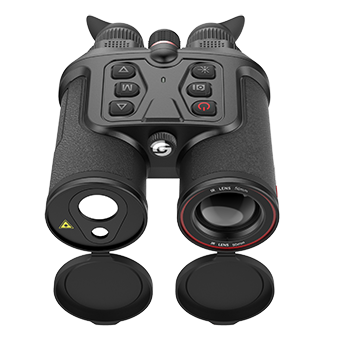Infrared Thermal Binoculars: Enhancing Night Vision and Surveillance

# Infrared Thermal Binoculars: Enhancing Night Vision and Surveillance
## Introduction to Infrared Thermal Binoculars
Infrared thermal binoculars have revolutionized the way we see and perceive the world in low-light or no-light conditions. These advanced optical devices utilize thermal imaging technology to detect heat signatures emitted by objects, animals, or humans, converting them into visible images. Unlike traditional night vision devices that rely on ambient light, thermal binoculars can operate in complete darkness, making them invaluable tools for various applications.
## How Infrared Thermal Binoculars Work
The science behind infrared thermal binoculars is fascinating. These devices detect infrared radiation (heat) emitted by all objects with a temperature above absolute zero. The binoculars contain special sensors that capture this thermal energy and convert it into electronic signals. These signals are then processed to create a visual representation where warmer objects appear brighter and cooler objects appear darker.
Key components of thermal binoculars include:
– Infrared detectors
– Optical lenses
– Image processing electronics
– Display systems
## Advantages Over Traditional Night Vision
Infrared thermal binoculars offer several significant advantages over conventional night vision equipment:
1. **Complete Darkness Operation**: They don’t require any ambient light to function effectively
2. **See Through Obstacles**: Can detect heat signatures through smoke, fog, and light foliage
3. **No Need for Illumination**: Unlike traditional night vision that may require IR illuminators
4. **Day/Night Use**: Effective in both daylight and nighttime conditions
5. **Detection of Hidden Objects**: Can reveal objects concealed behind thin materials
## Applications of Thermal Binoculars
The versatility of infrared thermal binoculars makes them useful in numerous fields:
### Military and Law Enforcement
– Surveillance operations
– Search and rescue missions
– Border patrol
– Hostage situations
### Wildlife Observation
– Nocturnal animal tracking
– Population surveys
– Anti-poaching efforts
### Industrial Uses
– Electrical inspections
– Mechanical equipment monitoring
– Building heat loss detection
### Outdoor Recreation
– Night hunting
– Camping safety
– Search and rescue operations
## Choosing the Right Thermal Binoculars
When selecting infrared thermal binoculars, consider these important factors:
1. **Resolution**: Higher resolution provides clearer images
2. **Detection Range**: How far the device can detect heat signatures
3. **Refresh Rate**: Higher rates provide smoother images
4. **Magnification**: Optical and digital zoom capabilities
5. **Durability**: Important for harsh environments
6. **Battery Life**: Crucial for extended operations
7. **Additional Features**: Like video recording or wireless connectivity
## Maintenance and Care
To ensure optimal performance and longevity of your thermal binoculars:
– Store in a dry, temperature-controlled environment
– Clean lenses with appropriate materials
– Avoid exposing to extreme temperatures when not in use
Keyword: Infrared thermal binoculars
– Follow manufacturer’s guidelines for battery care
– Regularly check for software updates if applicable
## The Future of Thermal Imaging Technology
As technology advances, we can expect to see:
– Higher resolution sensors in compact form factors
– Improved battery efficiency
– Enhanced image processing algorithms
– Integration with augmented reality systems
– More affordable options for civilian use
Infrared thermal binoculars represent a significant leap forward in our ability to see and understand our environment under challenging conditions. Whether for professional or recreational use, these devices continue to push the boundaries of what’s possible in night vision and surveillance technology.

